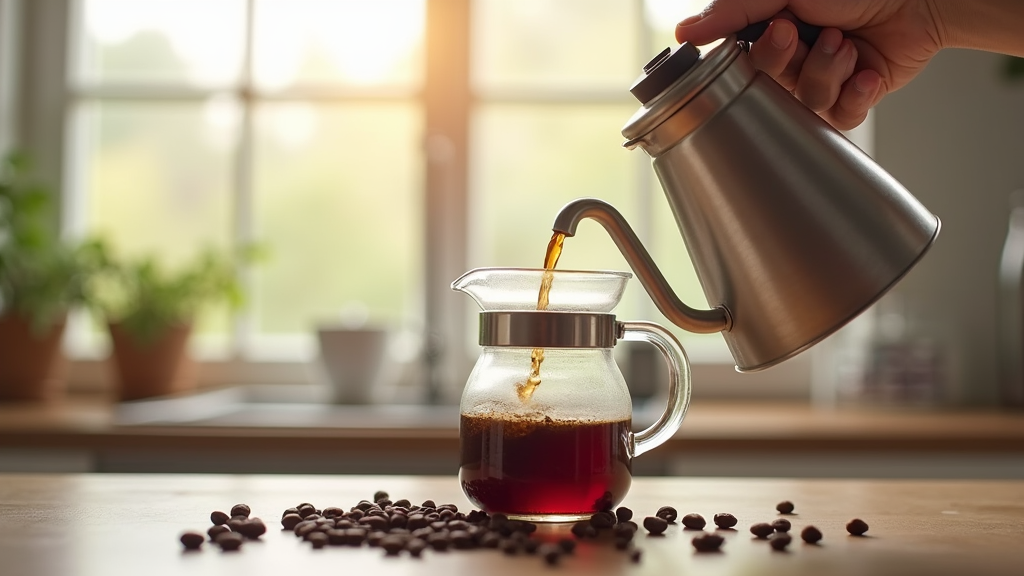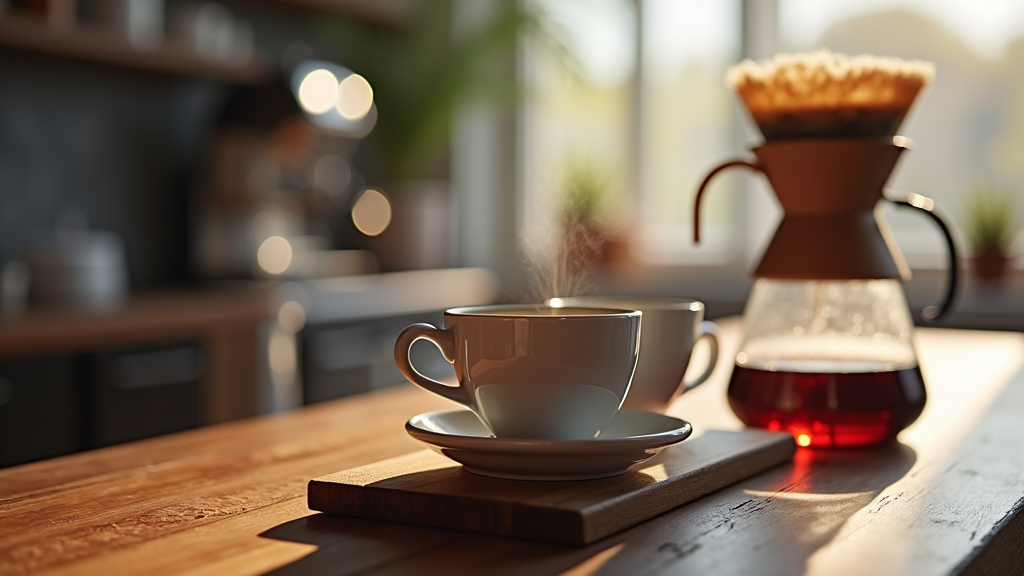Table of Contents
- Understanding What Temperature Does a Coffee Pot Brew At
- Understanding What Temperature Coffee Pot Brewing Entails
- Detailed Guide: Optimal Coffee Brewing Temperature
Understanding What Temperature Does a Coffee Pot Brew At

Why Coffee Brewing Temperature Matters: An Overview
The ideal temperature for brewing coffee is a crucial factor that significantly influences the final cup’s flavor, aroma, and overall quality. Generally, the sweet spot lies between 195°F (90.6°C) and 205°F (96.1°C). Brewing within this range ensures optimal extraction of the coffee bean’s desirable compounds, leading to a balanced and flavorful brew. Statistics show that maintaining this temperature range consistently results in a noticeably better coffee experience for most people.
A Brief History of Coffee Brewing Temperatures
Historically, brewing coffee involved more guesswork. Traditional methods relied on visual cues and experience to estimate water temperature. Modern technology has revolutionized this process, allowing for precise temperature control in coffee makers. This advancement has led to more consistent and higher-quality coffee brewing, moving away from the inconsistencies of older techniques.
Key Takeaways: What This Guide Will Teach You
This guide aims to provide you with a solid understanding of how temperature affects coffee extraction and flavor. You’ll learn the core principles behind achieving the perfect brewing temperature and gain practical knowledge on how to ensure your coffee maker operates within the optimal range. By the end of this guide, you’ll be equipped to brew consistently delicious coffee at home.
Understanding What Temperature Coffee Pot Brewing Entails
Fundamental Concepts for Coffee Pot Brewing Temperature
Achieving the perfect cup of coffee hinges on understanding a few key definitions and principles. Let’s start with extraction, which is the process of dissolving soluble compounds from coffee grounds into the water. The goal is to extract the ideal amount of these compounds to achieve a balanced flavor profile.
Under-extraction occurs when the water isn’t hot enough, or the brewing time is too short, resulting in insufficient dissolution of these compounds. This often leads to sour or weak coffee.
Conversely, over-extraction happens when the water is too hot or the brewing time is too long, causing excessive dissolution of compounds. This results in bitter or burnt-tasting coffee.
Maintaining the correct temperature is crucial for balanced extraction and, ultimately, optimal flavor in your brewed coffee. It’s the cornerstone of consistent, delicious results.
Essential Components Influencing Coffee Pot Brew Temperature
To control the temperature of your coffee brewing process, you’ll need a few essential elements. First and foremost, a coffee maker with temperature control is ideal. While optional, a thermometer can be useful for manually verifying the water temperature, especially with simpler models. And, of course, high-quality coffee beans are a must for the best possible flavor.
The heating element is responsible for heating the water to the desired temperature, while the thermostat monitors and regulates the water temperature to maintain consistency throughout the brewing process. These are primary aspects to consider when evaluating a coffee pot.
Secondary aspects include insulation, which helps maintain consistent temperature during brewing, and the water reservoir, which ideally should be made of BPA-free material.
It’s also important to recognize the variations among coffee makers. Automatic drip coffee makers, single-serve coffee makers, and espresso machines all operate with different temperature ranges and mechanisms.
Detailed Guide: Optimal Coffee Brewing Temperature

Preparation: Coffee Pot Brewing Temperature Essentials
Before diving into the brewing process, ensure you have everything you need for a perfect cup of coffee. Proper preparation is crucial for achieving the ideal brewing temperature.
- Required materials:
- Initial setup:
- Important considerations:
- Coffee maker.
- Freshly roasted coffee beans.
- Filtered water.
- Coffee thermometer (optional).
- Clean the coffee maker thoroughly.
- Ensure the water reservoir is filled with filtered water.
- Grind the coffee beans to the appropriate consistency for your brewing method.
- Water quality:Use filtered water to avoid mineral buildup and improve taste.
- Grind size:Adjust grind size based on the brewing method (e.g., medium for drip, fine for espresso).
Step-by-Step: Achieving Ideal Brewing Temperature
Follow these clear instructions to brew coffee at the correct temperature, ensuring a balanced and flavorful extraction.
- Best practices:
- Common mistakes to avoid:
- Preheating the coffee maker can help maintain consistent temperature.
- Use a coffee thermometer to verify the brewing temperature.
- Using boiling water (212°F or 100°C), which can lead to over-extraction.
- Brewing at temperatures below 195°F (90.6°C), which can result in under-extraction.
Advanced Techniques: Fine-Tuning Coffee Pot Temperature
For coffee enthusiasts seeking to perfect their brew, these advanced techniques offer ways to optimize the brewing temperature and extraction process for different roasts.
- Expert tips:
- Optimization methods:
- Troubleshooting:
- Lighter roasts may benefit from slightly higher temperatures (203-206°F or 95-97°C).
- Darker roasts typically perform better at slightly lower temperatures (194-199°F or 90-93°C).
- Adjust grind size and brewing time to fine-tune the extraction process.
- Use a variable temperature kettle for pour-over brewing.
- Insulate the coffee maker to minimize heat loss.
- Experiment with different water-to-coffee ratios to find your preferred strength.
- If the coffee tastes bitter, lower the brewing temperature or use a coarser grind.
- If the coffee tastes sour, increase the brewing temperature or use a finer grind.
- If the coffee maker overheats, descale and clean it regularly.

